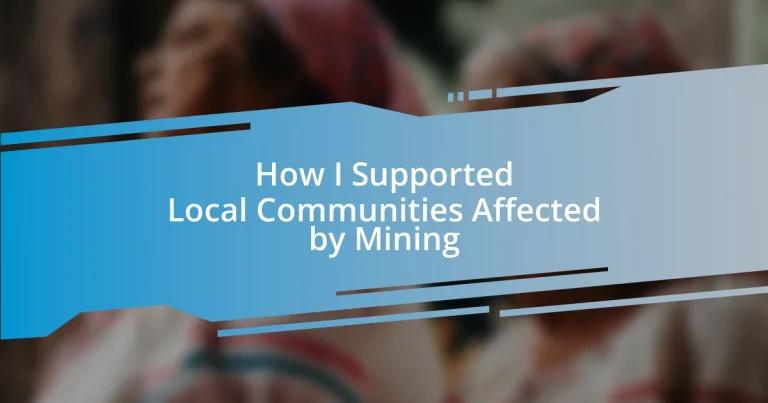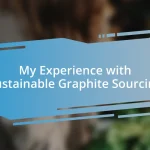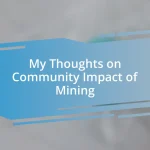Key takeaways:
- Mining can bring economic opportunities but also environmental and cultural challenges, highlighting the need for sustainable practices.
- Active listening and community engagement are essential for identifying local needs, including access to resources, cultural preservation, and decision-making input.
- Education, awareness, and partnerships with local organizations are crucial to empower communities and foster resilience against the uncertainties of mining operations.
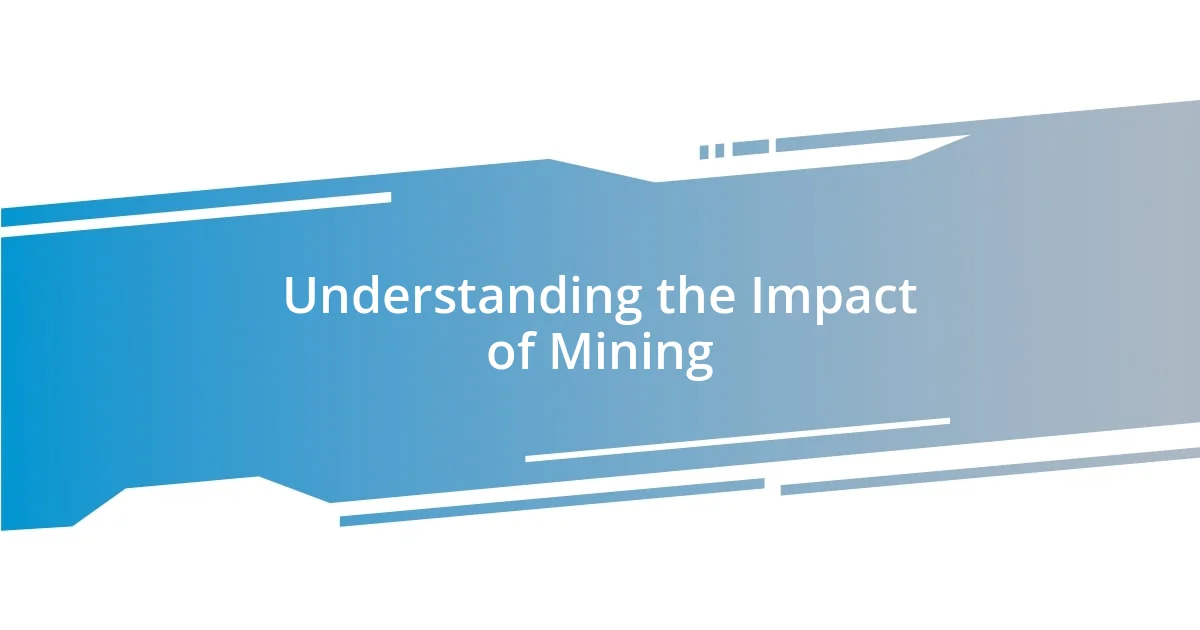
Understanding the Impact of Mining
Mining has a profound effect on local communities, often leading to both economic opportunities and environmental challenges. I remember visiting a small town after a mining company set up operations nearby. The hope and excitement in the air were palpable as residents anticipated new jobs and increased revenue. Yet, amid that excitement, I couldn’t help but notice the lingering worry about how this development would change their landscape forever.
In my experience, while some community members thrive from the influx of jobs, others feel a deepening sense of loss. I recall speaking with a local farmer who expressed sorrow over the loss of pristine land, which had been in his family for generations. He posed an intriguing question: “At what cost do we prioritize progress?” It’s a thought-provoking reminder that the benefits of mining come at a price, one that many in the community are forced to reckon with daily.
Moreover, the rush for minerals often leads to a cycle of boom and bust, stirring uncertainty in these tight-knit communities. I once attended a town hall meeting where residents voiced their fears about the inevitable decline when resources dry up. Imagine living on a seesaw, oscillating between hope and despair. This reality underscores the need for sustainable practices and community benefits that go beyond mere economic statistics, fostering resilience in a rapidly changing world.
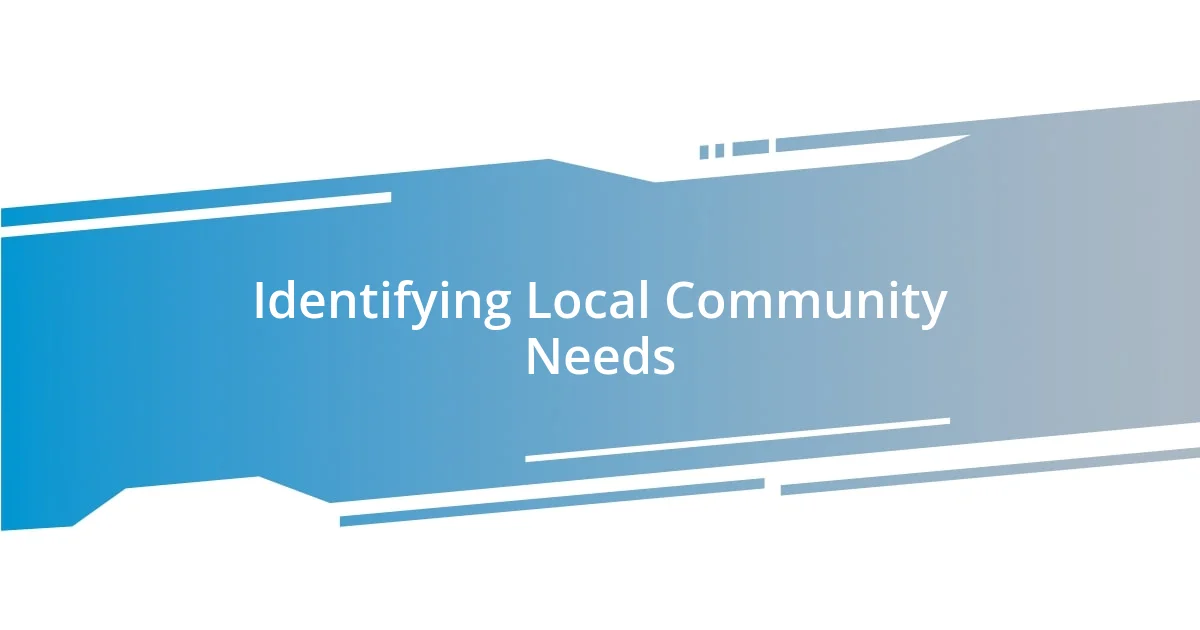
Identifying Local Community Needs
To truly understand local community needs, I’ve found that active listening is crucial. Often, the concerns and desires of residents can be overlooked, making it vital to engage directly with them. During a visit to a village affected by mining, I spent hours chatting with residents in their homes. One woman shared her struggles to access clean water, something I hadn’t anticipated but quickly realized was a fundamental concern affecting their daily lives.
Identifying community needs requires a close look at various factors that may not immediately be visible. Here are some key areas to consider:
- Access to essential resources: Clean water, healthcare, and education should be prioritized.
- Cultural preservation: Understanding and respecting local traditions is vital in a changing environment.
- Input on decision-making: Community engagement in project planning ensures their voices are heard.
- Economic opportunities: Assessing job training needs to prepare residents for new roles in the mining industry is key.
- Environmental concerns: Identifying areas of ecological impact can help address community fears and aspirations.
Listening to these stories and anecdotes not only informs support efforts but also creates a more profound connection between the mining initiatives and the communities they touch.
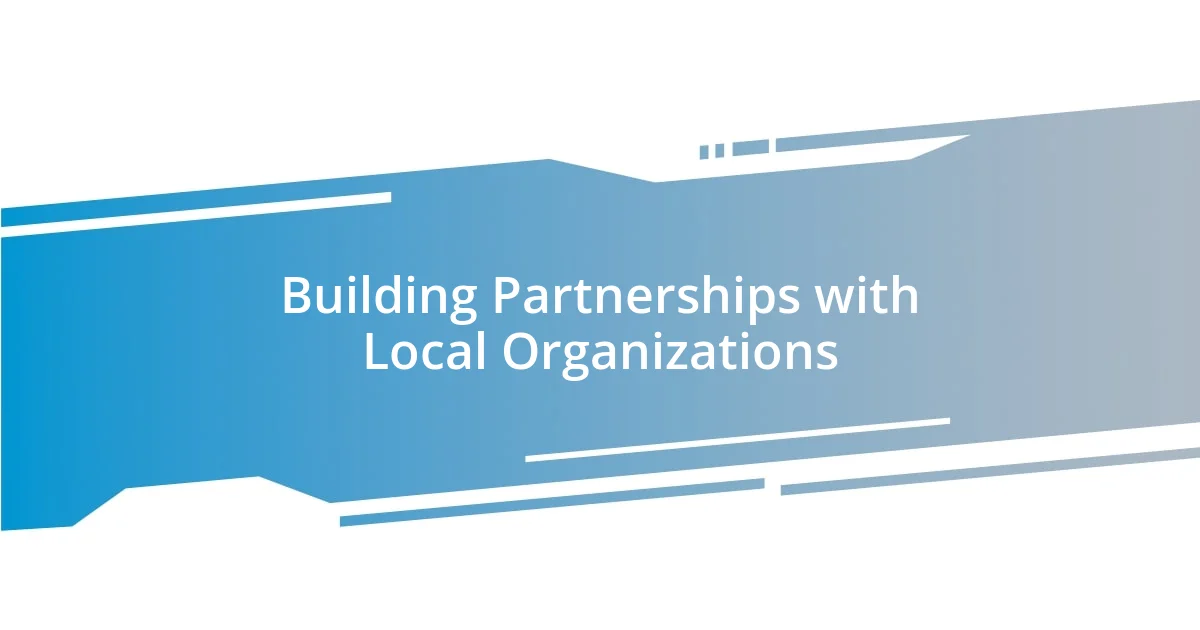
Building Partnerships with Local Organizations
Building partnerships with local organizations is a cornerstone of effective community support in mining-affected areas. I recall collaborating with a local nonprofit focused on youth education. They shared that many young people felt disillusioned by the fleeting nature of mining jobs, often leading to a lack of motivation. By partnering with them, we developed a vocational training program that empowered youths, nurturing skills that would serve them long after the mines closed. The pride I saw in their eyes during graduation was a clear testament to the power of collaboration.
Moreover, I’ve found that aligning with local organizations allows for a richer understanding of cultural dynamics. In one instance, while working with a grassroots group, I learned about traditional practices of sustainable living that had been passed down through generations. Integrating these insights into our support initiatives not only fostered respect but also reinforced community resilience. I learned that these partnerships could amplify the voices of local leaders, making our efforts not just about economic gain, but about cultural recognition and preservation.
Lastly, it’s essential to establish trust and effective communication within these partnerships. Building relationships takes time, but I remember a community leader who expressed appreciation for our transparency and willingness to listen. Agreeing on shared goals and paving a path together can lead to sustainable solutions. When the community feels heard and valued, the results can be profoundly positive—not just for mining projects, but for the entire community’s well-being.
| Aspect | Our Partnership Approach |
|---|---|
| Skill Development | Vocational training programs tailored to community needs. |
| Cultural Preservation | Integrating traditional practices into community initiatives. |
| Trust Building | Transparent communication and shared goal-setting. |
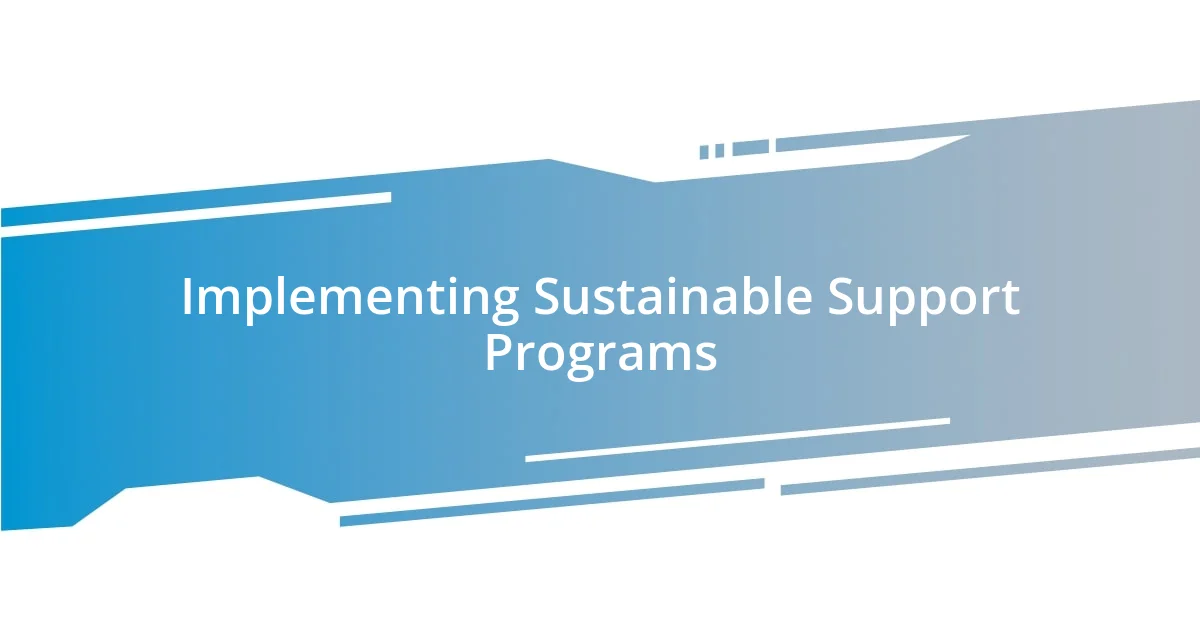
Implementing Sustainable Support Programs
Implementing sustainable support programs can often feel like a balancing act, but I’ve discovered that careful planning makes a world of difference. For instance, during one of my projects, I helped initiate a sustainable agriculture program to encourage food security among families impacted by mining. Watching families transform their backyards into vibrant gardens not only enhanced their nutrition but instilled a sense of pride and autonomy. Isn’t it remarkable how a small shift can lead to such significant benefits?
I also believe that ongoing education plays a crucial role in these programs. I once attended a workshop where locals learned about sustainable practices, such as crop rotation and organic farming techniques. The excitement in the room was palpable; participants were eager to share their thoughts and ask questions. One gentleman even remarked, “This knowledge can change our future!” That moment left me reflective on how empowering communities through education fosters long-term resilience and self-sufficiency.
Lastly, I’m a strong advocate of regularly assessing the effectiveness of these initiatives. Implementing feedback loops with the community allows for real-time adjustments to programs, ensuring they remain relevant. I vividly remember a feedback session where the participants suggested a new market day for their produce. This simple change not only created an additional income source but also brought the community together. How amazing is it to witness a program adapt based on the community’s needs? This iterative process truly embodies the spirit of sustainability, making support systems more robust and effective over time.
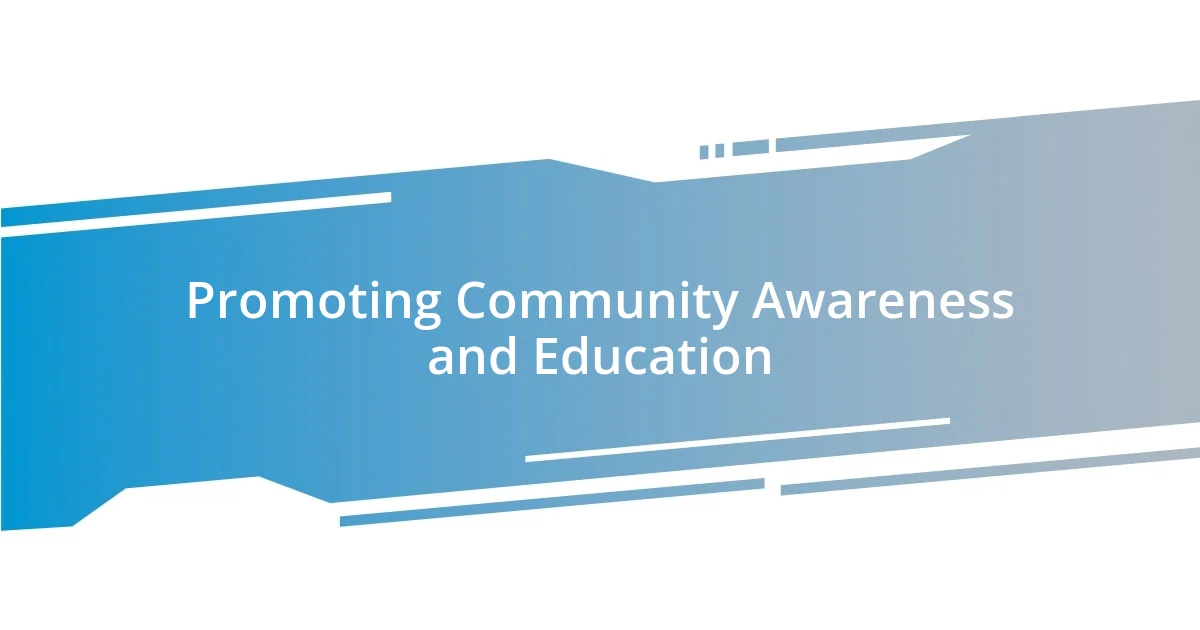
Promoting Community Awareness and Education
Promoting community awareness and education has always been a personal priority in my journey. I remember attending a local town hall meeting where residents expressed their confusion about the implications of mining on their land. It hit me then how vital it is to open channels for knowledge and dialogue. Engaging workshops that break down complex topics into digestible pieces can transform apprehension into empowerment. I’ve seen firsthand how a group of concerned mothers turned into advocates for environmental education, ready to protect their community after gaining insight into the environmental impacts mining could cause.
Another time, I coordinated a series of educational sessions about the history of mining in the area. A young resident articulated it beautifully when she exclaimed, “I never knew our history was so rich and, at the same time, so troubled!” That struck a chord with me. Educating community members about their past empowers them to make informed decisions about their future. It’s not just about imparting knowledge; it’s about igniting a spark that kindles a sense of ownership and responsibility.
I’ve also learned that emotional resonance plays a crucial role in community outreach. Once, during a presentation on the broader economic impacts of mining, a local elder shared how the loss of ancestral lands affected his family. His poignant storytelling was a reminder of the human element often lost in statistics. When educators speak from the heart, it encourages others to share their experiences, creating a vibrant tapestry of community voices. Don’t you see how important it is to elevate these stories? They remind everyone that education isn’t just about facts; it’s about lives—and that’s what truly drives change in mining-affected communities.












